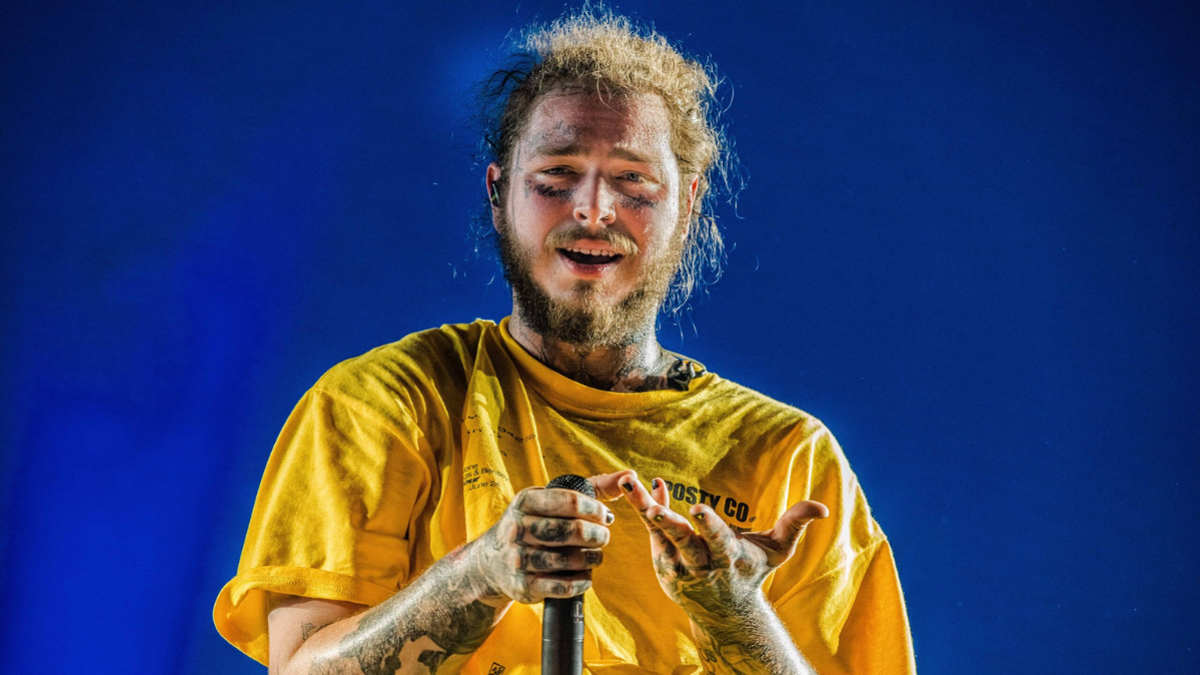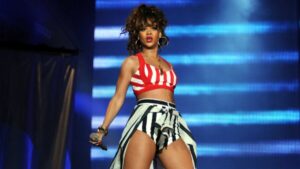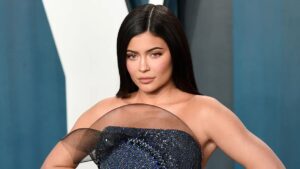In a world where virality often fades faster than it arrives, Post Malone’s ascent from a scrappy SoundCloud hopeful to a multimillionaire pop culture juggernaut feels almost mythic. His face tattoos, crooning trap ballads, and genre-agnostic sound made him hard to label—and impossible to ignore.
But beneath the beer-soaked anthems and unexpected fashion collabs lies a fascinating financial evolution. How did a young artist with no major co-signs or conventional radio appeal turn digital buzz into sustained commercial success? More importantly, how did he grow that early momentum into a diversified fortune by 2025, without losing the authenticity that made him famous in the first place?
This isn’t just a story about earnings—it’s a study in artistic reinvention, business savvy, and the blurred lines between fame, fortune, and fandom. Let’s unpack how Post Malone built his empire, one unexpected move at a time.
2015–2016: White Iverson, a $oundCloud Spark and Industry Attention
The Upload That Changed Everything
In early 2015, SoundCloud was the digital Wild West—an ecosystem where unknown artists could post a track at midnight and wake up viral. That’s exactly what happened when a 19-year-old Post Malone dropped “White Iverson,” a melodic, woozy anthem recorded in a friend’s closet.
With braids, gold grills, and a sound that blurred hip-hop, R&B, and indie sadness, he didn’t fit any mold—and that’s what made him magnetic. As the plays surged into the millions, Post watched in disbelief from a cheap Airbnb, refreshing his feed while the industry came knocking.
No PR push. No co-sign. Just raw vibes and internet gravity. In a scene craving something new, Post Malone delivered something unforgettable.
The Republic Records Signing: Doors Open, Deals Begin
When Republic Records signed Post Malone in mid-2015, it wasn’t just a label deal—it was a financial inflection point. Before the ink dried, Post was still pulling in modest SoundCloud checks and merch cash, maybe scraping five figures. But the contract brought an advance, tour support, and access to real industry muscle.
Suddenly, the kid recording in a closet had a team, a budget, and deadlines. With that came opportunity—and pressure. Would a major label dilute what made him unique? Could he scale without losing his edge?
Early tour slots and rising merch sales hinted at what was coming. Post wasn’t rich yet, but the door had opened—and he knew exactly how to walk through it.
2017–2018: Beerbongs & Bentleys and the Millions Start Rolling In
Streaming Royalty Powerhouse
By 2017, Post Malone wasn’t just charting—he was dominating playlists across the globe. “Rockstar” wasn’t a fluke; it was a streaming supernova, pulling in over 1.5 billion Spotify plays alone. At roughly $0.003 per stream, that one song generated millions—before merch, syncs, or tours even entered the picture.

Streaming changed everything. Instead of waiting for album sales, Post earned daily income from a constantly spinning digital catalog. Tracks like “Congratulations” and “Better Now” didn’t just go viral—they became long-tail assets, racking up passive revenue.
This wasn’t luck. Post mastered the art of repeatable listening: moody, melodic hooks made for streaming culture. And just like that, he crossed from rising star to financial powerhouse.
Brand Collabs and the Bud Light Factor
Post Malone didn’t chase endorsements—he lived them. His genuine love for Bud Light (tattoos, backstage cases, even stage props) made the partnership feel less like branding and more like biography. That authenticity turned into serious money: not just in sponsorship dollars, but in co-branded content, exclusive merch, and PostyFest, his beer-soaked mini-festival that blurred the line between fan event and brand activation.
Unlike polished celebrity deals, Post’s collabs worked because they didn’t feel like deals at all. Fans bought what he wore, drank what he drank. For brands, that kind of cultural pull is priceless—and for artists, it’s another stream of income with real staying power.
2019–2021: Stadium Tours, Chart Reign & Brand Malone
Touring as a Financial Engine
In today’s music economy, touring isn’t optional—it’s the backbone of real wealth. Post Malone understood that early. By 2019, his Runaway Tour was pulling in over $1.3 million per night, with VIP packages, dynamic ticket pricing, and sold-out arenas stacking earnings fast. On top of that, venue merch booths turned every show into a mobile storefront.
When COVID-19 grounded live music in 2020, Post’s momentum didn’t stall—he leaned on streaming residuals and licensing deals to keep revenue flowing. Still, touring remained his financial engine, and once the world reopened, so did the cash floodgates.
His strategy was clear: turn every stage into both a performance and a profit center—and he did it better than most.
If you want to see how each stream contributes, check out a breakdown of Post’s income sources: merch, tours, and brand deals.
A Face for Fashion, Fragrance, and Fun
While other celebrities chased high-fashion contracts, Post Malone carved his own lane—with foam clogs and streetwear. His Crocs collaboration sold out instantly, not because it was trendy, but because it felt like him: quirky, casual, and totally unfiltered. The same goes for Posty Co, his personal merch line, which thrived not on prestige but on personality.
This wasn’t just branding—it was trust. Fans knew he wasn’t posing for a paycheck. He leaned into what made him weird, and in doing so, became powerfully relatable. In a world of over-curated celebrity image, Post turned authenticity into a brand—and a bankable one at that.
2022–2025: Investor Moves, Fatherhood, and Financial Maturity
Smarter with Money: Post’s Private Investments
As Post Malone edged into his late 20s, the money moves shifted. The flashy purchases faded, replaced by quiet investments—in things like a Utah compound, rumored stakes in cannabis ventures, and even some dabbling in NFTs and beverages. But this wasn’t just diversification; it felt like a pivot in mindset.
Maybe it was fatherhood. Maybe it was fatigue from always being on. Either way, Post started thinking long-term—building wealth instead of just earning it. Trusted advisors entered the picture. So did privacy.
This was no longer the SoundCloud kid chasing viral hits. This was an artist setting up his financial foundation—brick by brick, beyond the spotlight.
That mindset shift was also reflected in his real estate — an inside look at Post Malone’s Utah fortress and why he chose it shows exactly how.
Personal Life, Lower Profile, But Rising Worth
In recent years, Post Malone has stepped out of the spotlight—but not off the financial radar. While he spends more time with his daughter and retreats to the quiet of his Utah estate, his music keeps working for him. Licensing deals, sync placements, and massive catalog royalties from past hits mean the checks keep arriving—even when he’s off tour.

Ironically, the less we see him, the more his fortune grows. Parenthood and privacy haven’t slowed him down; they’ve just shifted the tempo. Post isn’t chasing every headline anymore—he’s earning in the background, proof that visibility and value aren’t always linked.
Sometimes, building wealth means knowing when to disappear.
Peer Group Comparison: Where Post Malone Stands in the Industry
While Post Malone doesn’t command the same headline frenzy as Travis Scott or Billie Eilish, his staying power is undeniable—and lucrative. Travis might headline his festival and partner with Nike, and Billie may have an Oscar and luxury fashion deals, but Post has something arguably more rare: consistency without spectacle.
He’s not everywhere, but he’s always around—charting, streaming, quietly growing his brand without burnout or controversy. His net worth, estimated around $50 million by 2025, puts him right in the mix. He doesn’t own a creative empire like Travis, but he also hasn’t stumbled. His investments are quieter, his brand more relatable, and his path less frantic.
| Artist | Est. Net Worth (2025) | Key Income Streams |
| Travis Scott | $80M | Festivals, Nike deals, Cactus Jack label |
| Billie Eilish | $50M | Tours, fashion, fragrance, film |
| Post Malone | $50M | Streaming, merch, collabs, royalties |
In an industry that burns fast, Post’s slow-build success may be the most sustainable model of all.
For more context, here’s how Post Malone stacks up against Drake and other industry giants across music and business.
What Post Malone Taught Me About Money and Reinvention
I’ll be honest—when I first saw Post Malone back in 2015, I didn’t peg him as someone who’d last, let alone become one of the most financially strategic artists of his generation. The face tattoos, the beer in hand, the sleepy swagger—it all felt like a moment, not a movement. But I was wrong.
What’s impressed me most about Post’s journey isn’t just the money—it’s how quietly, methodically, and humbly he’s built it. He didn’t chase clout. He didn’t rush to launch a record label or overextend his brand. Instead, he leaned into what made him different—and let the work compound.
Watching him evolve from SoundCloud star to savvy investor made me rethink what “success” looks like in the music world. It doesn’t always roar. Sometimes it hums, quietly gaining value while the spotlight swings elsewhere.
Post Malone didn’t just reinvent himself. He reinvented the playbook.
His journey into entrepreneurship deserves its own spotlight—see how Post built his brand through beer, gaming, and authenticity.
Net Worth Is Just One Part of the Story
Post Malone’s rise isn’t just about the millions—it’s about how. From a bedroom mic and a viral beat to global stages and smart investments, his journey is a testament to creative resilience and quiet reinvention.
He didn’t follow the traditional path or conform to industry expectations. Instead, he built a brand rooted in being unapologetically himself and turned that into a lasting career.
Sure, the numbers are impressive. But what sticks is the story: a kid who didn’t look the part, didn’t play by the rules, and still made it big.
As Post once said, “I feel just like a rockstar.” And honestly, he earned every bit of it.
For a deeper dive into his revenue streams and strategic plays, here’s a complete breakdown of his $50 million empire in 2025.
Nishant is a digital strategist and celebrity finance analyst with over 15 years of experience in SEO-driven content. As Founder of TheNetWorths.com, he creates high-authority profiles on wealth, branding, and cultural influence.




















1 thought on “Post Malone’s Net Worth Over Time: From SoundCloud to Stardom (2015–2025)”